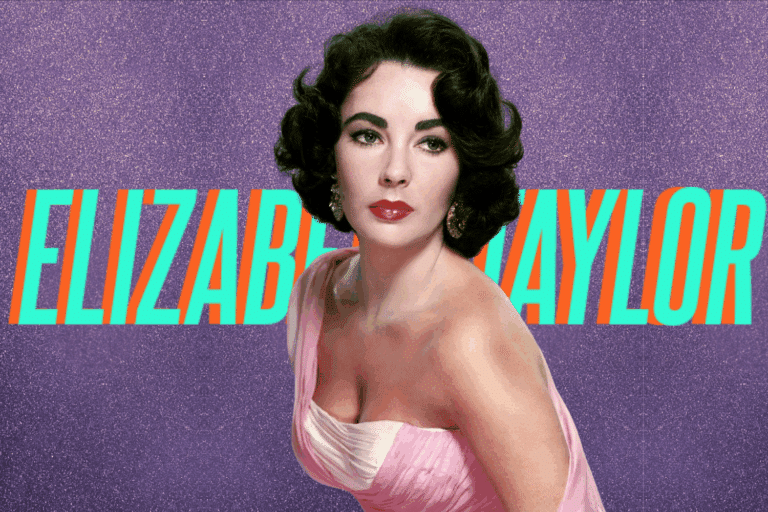
Taylor Swift has done it again. With the release of her new album “The Life of a Showgirl,” she’s sent fans spiraling into lyrical deep dives and Easter egg hunts. But one track in particular has everyone talking: “Elizabeth Taylor.” It’s a shimmering, old-Hollywood ballad that paints the screen legend as both muse and metaphor: glamorous, complicated, and unforgettable.
But there’s a part of Taylor’s story that rarely gets the pop-culture spotlight: her Jewish identity. In 1959, at the height of her fame, Elizabeth Taylor converted to Judaism, a move that shocked Hollywood, made international headlines, and became a meaningful part of who she was.
As Swift reintroduces the icon to a new generation, it’s worth looking beyond the diamonds and the tabloid drama to the faith that shaped one of the most famous women in the world.
The basics
Elizabeth Taylor was born on February 27, 1932, in London to a Christian Scientist family who fled to Los Angeles during World War II. She made her big-screen debut as a child in the 1940s and quickly became one of Hollywood’s brightest young talents. By the 1950s, she’d cemented her status as a leading lady of the silver screen, and in the 1960s, she became the highest-paid actress in the world.
Taylor’s career was marked by legendary performance in now-classics like “Cleopatra,” “Cat on a Hot Tin Roof,” “The Taming of the Shrew,” “Suddenly Last Summer,” “Who’s Afraid of Virginia Woolf?,” and “Butterfield 8,” among many others.

But here’s the twist: despite her legendary acting career, most of her fortune didn’t come from movies — it came from perfume. Taylor was only the second celebrity, after Sophia Loren, to launch her own fragrance line, turning scents like “White Diamonds” into a global empire.
Decades later, her name still evokes old-Hollywood glamour and larger-than-life drama. In 1999, the American Film Institute crowned her the seventh greatest female screen legend of all time.
During her storied career, Taylor won two Oscars and was knighted in both France and England.
Elizabeth Taylor’s lifelong connection to Judaism
What often gets overlooked in the glittering myth of Elizabeth Taylor is that she was Jewish. She lived an active Jewish life, gave generously to Jewish causes, and even helped produce films centered on Jewish stories. When she died in 2011, she was buried in a traditional Jewish ceremony.
And despite her eight marriages, her conversion wasn’t about a man. “I feel as if I have been a Jew all my life,” she said after her conversion.
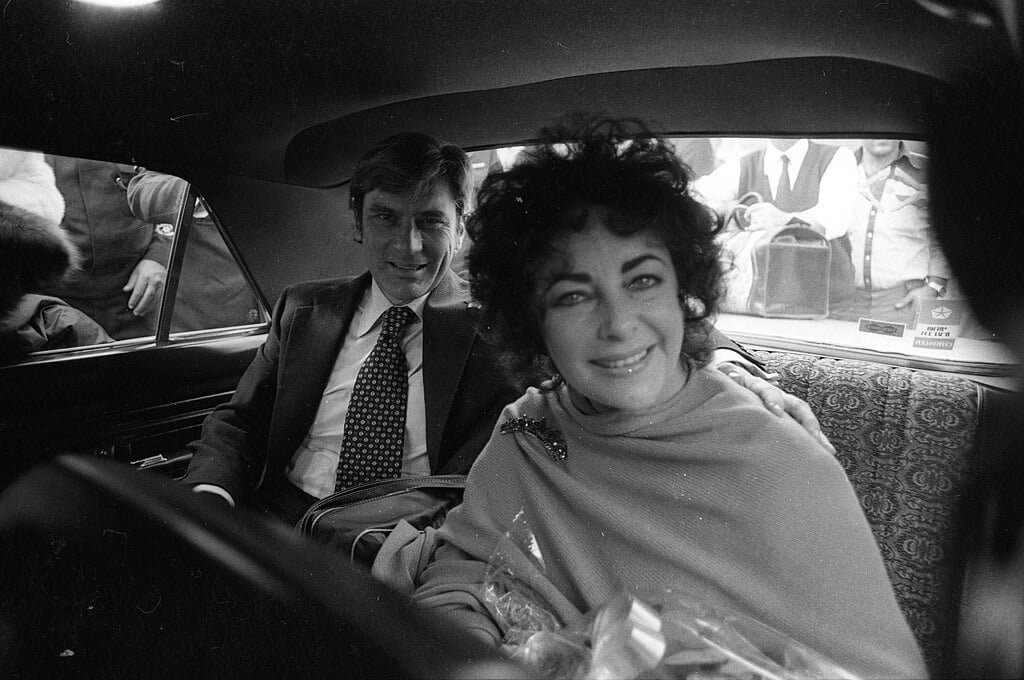
Taylor felt a connection to the Jewish people since her childhood, when her mother, Sara Sothern, and her stepfather, Victor Cazalet, were active supporters of the Zionist movement.
While she was famous for her dazzling jewelry collection, Taylor also quietly built a personal trove of Judaica. In 2020, two of her menorahs were auctioned off, including one believed to have been a gift from Israel presented by her head of security.
When Taylor died of congestive heart failure in 2011, she was laid to rest at Forest Lawn Cemetery in a small, private Jewish funeral attended by about 40 people. The ceremony began 15 minutes late — per her own request — so she could be “fashionably late” one last time. Rabbi Jerry Cutler, founder of the Creative Arts Temple in West Los Angeles, presided over the service. Taylor was buried the day after her death in a simple wooden casket, in keeping with Jewish tradition.
Elizabeth Taylor married two Jewish men
Taylor’s third husband, producer Mike Todd (born Avrom Hirsch Goldbogen), was Jewish. The couple hoped to be married by a rabbi, but none could be found in Acapulco, so they went ahead with the ceremony — just two days after Taylor finalized her divorce from her second husband, Michael Wilding, the father of her two eldest sons.

Their relationship was both passionate and volatile. Todd, a showman and Hollywood producer who was also the son of an Orthodox rabbi, was famously the first of Taylor’s husbands who didn’t fear her fame. He delighted in cooking for her and showering her with extravagant gifts. In 1957, they welcomed their daughter, Liza.
Tragically, while Taylor was filming “Cat on a Hot Tin Roof” in 1958, Todd’s private plane — aptly named Liz — crashed over New Mexico, killing him instantly.
To cope with Todd’s death, Taylor turned to Temple Israel in Los Angeles.
“She found solace in the words of Rabbi Nussbaum and from Temple Israel,” Becoming Jewish: Warhol’s Liz and Marilyn curator Joanna Robotham said. “It grounded her. It helped her find happiness again.”
The next year, as she was preparing to marry Jewish singer Eddie Fisher, Taylor converted to Judaism because of her attraction to its values and dedication to social justice.
“I felt terribly sorry for the suffering of the Jews during the war. I was attracted to their heritage. I guess I identified with them as underdogs,” Taylor’s biographer, Kitty Kelley, quotes her as saying.
Under the guidance of Nussbaum — a Holocaust survivor who had originally been slated to convert Sammy Davis Jr. — she spent over a year attending services and studying the faith. Nussbaum also asked her to read several books on Judaism. After her conversion, she took on the Hebrew name Elisheba Rachel.
Taylor insisted that neither Todd nor Fisher played a role in her conversion: “Judaism had absolutely nothing to do with my past marriage to Mike [Todd] or my upcoming marriage to Eddie Fisher, both of whom were Jewish. It was something I had wanted to do for a long time.”
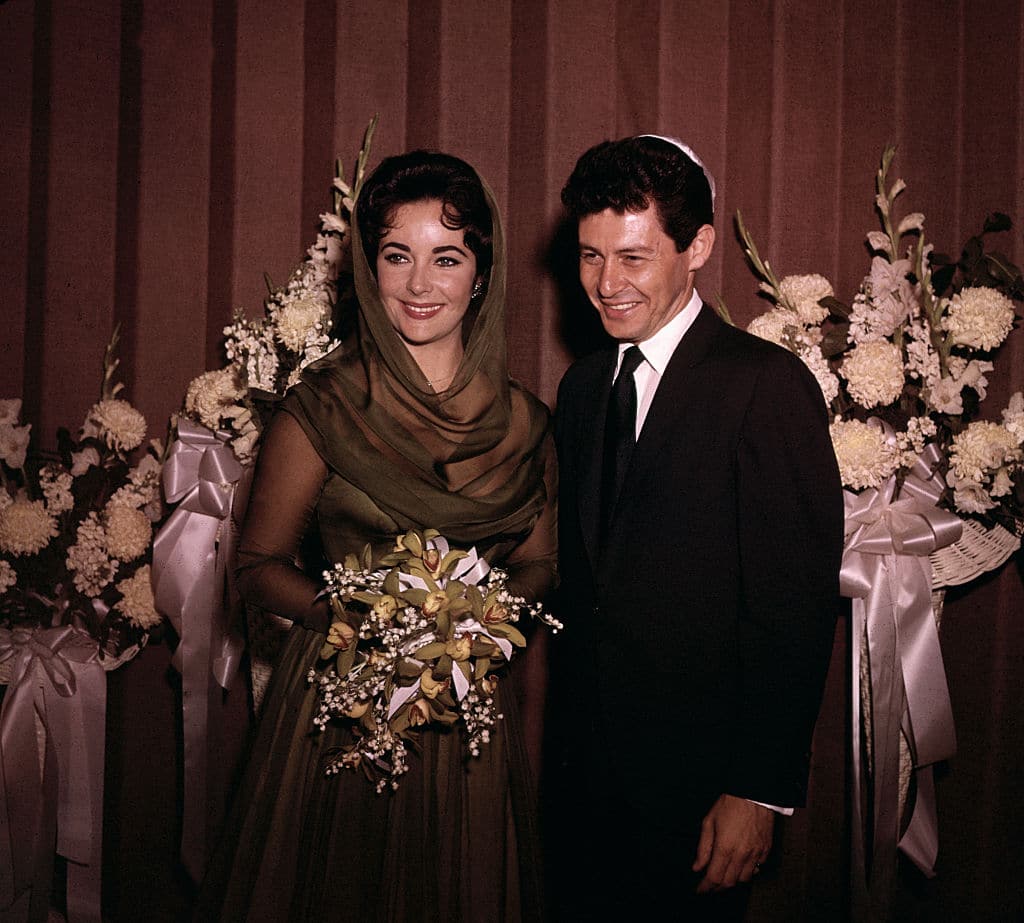
On May 12, 1959, Taylor and Fisher married at Temple Beth Sholom in Las Vegas. Their marriage was marked by scandal, as he was married to actress Debbie Reynolds when their relationship began.
The couple maintained an active Jewish life together, attending functions for Jewish causes. In 1960, they attended a dinner to support the Jennie Grossinger Medical Center in Tel Aviv, and were spotted chatting with the legendary Catskills resort owner.
While in Moscow for a film festival in 1961, Taylor and Fisher sang together in Hebrew at a concert for U.S. service members.

Still, by 1964, the marriage was over. Taylor fell for her “Cleopatra” co-star Richard Burton (whom she would marry twice). Both left their respective spouses, and Taylor claimed that she had only married Fisher because she was still grieving Mike Todd.
According to “Furious Love,” the book chronicling Taylor and Richard Burton’s famously tempestuous marriages, the couple once even argued over who was “more Jewish.” This was no small feat, considering Burton was Welsh and not Jewish at all.
The book recounts one of their public spats: Burton, who once referred to the Welsh as “the Jews of Britain” to describe their outsider status, snapped at Elizabeth, “You’re not Jewish at all. If there’s any Jew in this family, it’s me!” She shot back without missing a beat: “I am Jewish — and you can [buzz] off!”
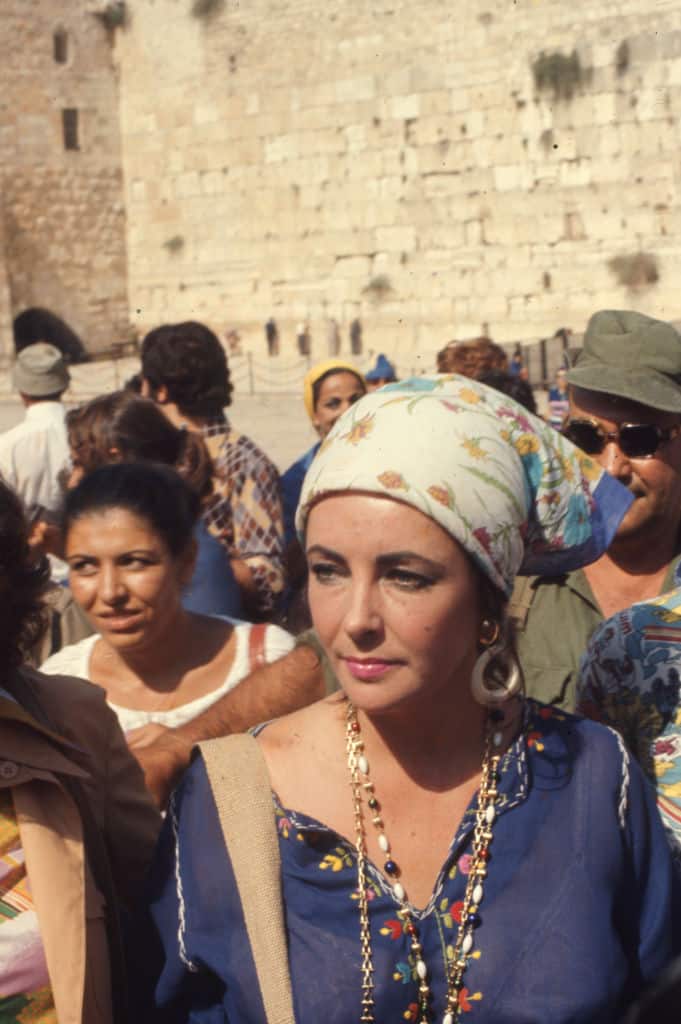
Elizabeth Taylor’s Jewish identity impacted her films
While the set of “Cleopatra” is most remembered for Taylor and Burton’s affair, Taylor’s casting as the final pharaoh of Egypt in 1963 caused turmoil.
Taylor’s outspoken support for Israel didn’t go unnoticed. After she purchased $100,000 worth of Israeli bonds, Arab countries placed her on an official blacklist, banning all of her films from their theaters. But politics eventually gave way to publicity. After Egyptian officials watched a private screening of “Cleopatra,” they decided the film’s glamorous portrayal of Egypt was too valuable to pass up, and Taylor was quietly removed from the blacklist.
In the summer of 1976, Taylor made headlines for a striking act of solidarity. She offered herself as a hostage in place of the 248 passengers held by Popular Front for the Liberation of Palestine, hijackers at Entebbe Airport in Uganda, before the Israeli military carried out its dramatic rescue on July 4, known as Operation Entebbe. The offer, revealed two years later at a Jewish National Fund gala honoring Taylor and her then-husband, Senator John W. Warner.
Not long after, Taylor joined Hollywood’s response to the crisis. In 1978, she appeared in “Victory at Entebbe,” a made-for-TV movie dramatizing the hijacking and rescue. She played Edith Vilnofsky opposite Kirk Douglas’s Hershel Vilnofsky, with Richard Dreyfuss portraying Col. Yoni Netanyahu and a young Anthony Hopkins as Yitzhak Rabin.
In 1982, Taylor narrated the Holocaust documentary “Genocide” alongside Orson Welles.
Elizabeth Taylor’s philanthropy and relationship with Israel
Throughout her life, Taylor’s support of the Jewish state never wavered.
In 1975, Taylor returned to Israel with Burton. Rumor had it she hoped to marry him there, but no rabbi would agree to officiate since he wasn’t Jewish. The couple stayed at Jerusalem’s storied King David Hotel — alongside Henry Kissinger — and Burton gave a Bible reading at a local theater.
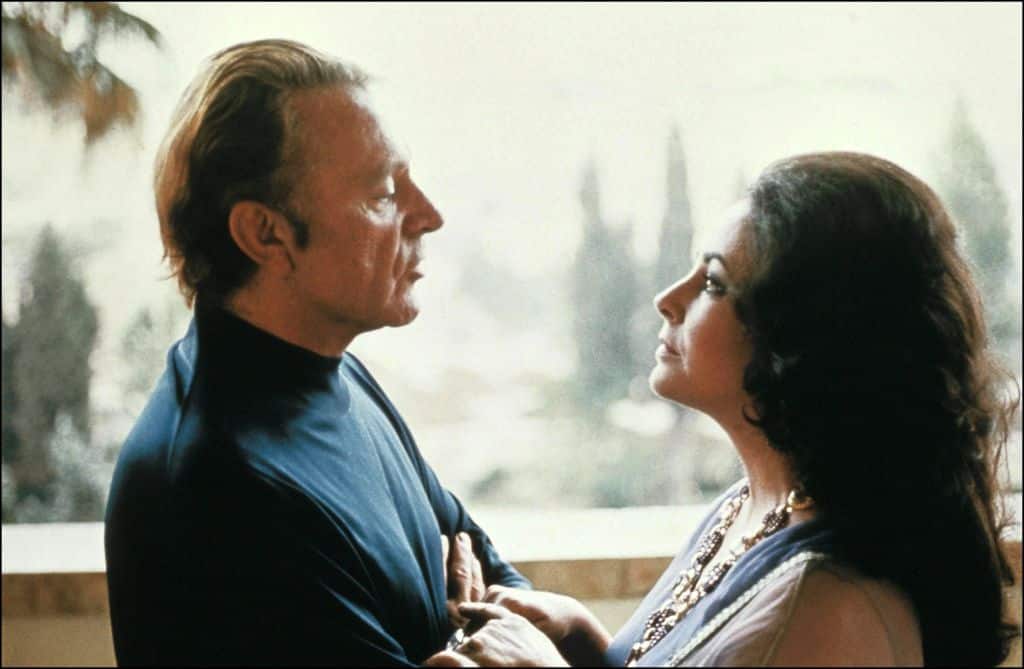
A year later, she visited again, this time with her new husband, politician John Warner. And in 1982, Taylor embarked on a 10-day goodwill mission to the Middle East to promote peace and tourism.
“I want to bring a sense of sincere friendship between myself and the people of America to Israel,” Taylor told reporters. “I want to try to create peace between Israel and Jordan.”
During the trip, she met with Prime Minister Menachem Begin, visited Ariel Sharon at his home, and spent time with sick children and soldiers in local hospitals.
Taylor’s political commitments weren’t symbolic. She canceled a planned trip to Moscow in 1967 over the USSR’s anti-Israel stance, and in 1975, she signed a letter condemning a United Nations resolution equating Zionism with racism.
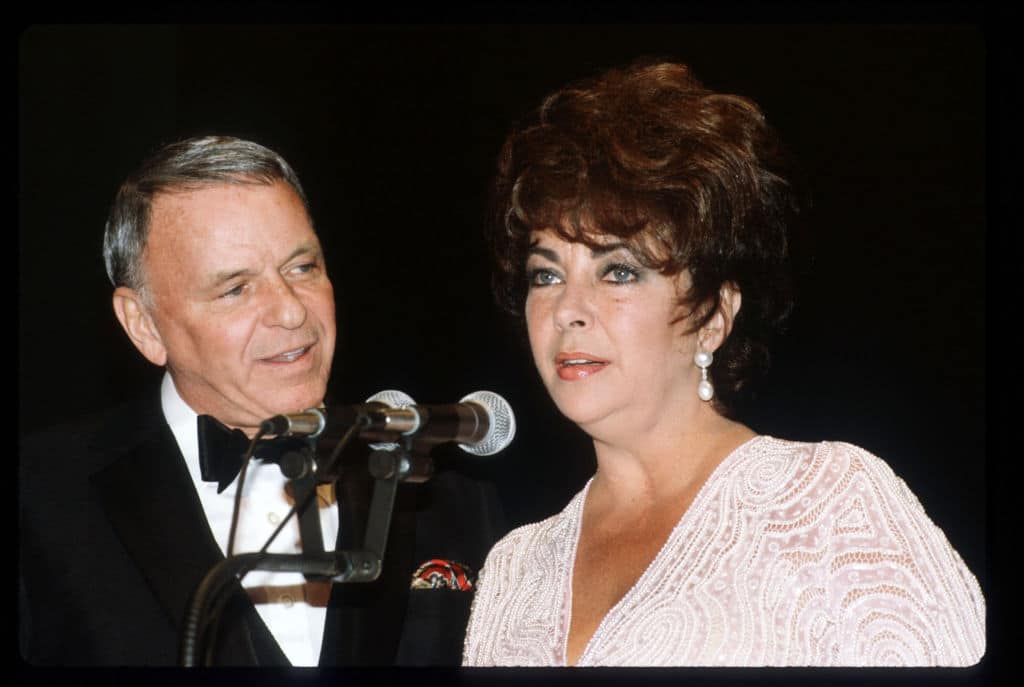
Taylor gave a lot to Jewish causes. Back in 1959, she bought $100,000 in Israel bonds, and in 1967, she helped raise $840,000 for Israel. She participated in fundraisers for the Jewish National Fund alongside Jewish singer Sammy Davis Jr. and was an ardent and vocal supporter of the Simon Wiesenthal Center, which helps preserve the memory of the Holocaust.
Taylor was among the first major celebrities to step into the fight against HIV/AIDS, helping to raise more than $270 million for the cause starting in the mid-1980s. Her advocacy began out of frustration: despite the growing media attention, real action was scarce. In a Vanity Fair interview, she explained how she decided to leverage the very fame she’d long resented.
“I decided that with my name, I could open certain doors, that I was a commodity in myself — and I’m not talking as an actress,” she said. “I could take the fame I’d resented and tried to get away from for so many years — but you can never get away from it — and use it to do some good. I wanted to retire, but the tabloids wouldn’t let me. So I thought: If you’re going to screw me over, I’ll use you.”
Back in 1985, Taylor cofounded the National AIDS Research Foundation with Jewish doctor and immunologist Dr. Michael Gottlieb, who famously identified AIDS in 1981. She went on to establish the Elizabeth Taylor AIDS Foundation in 1991.
She was also a supporter of the Kabbalah Center in Los Angeles.
